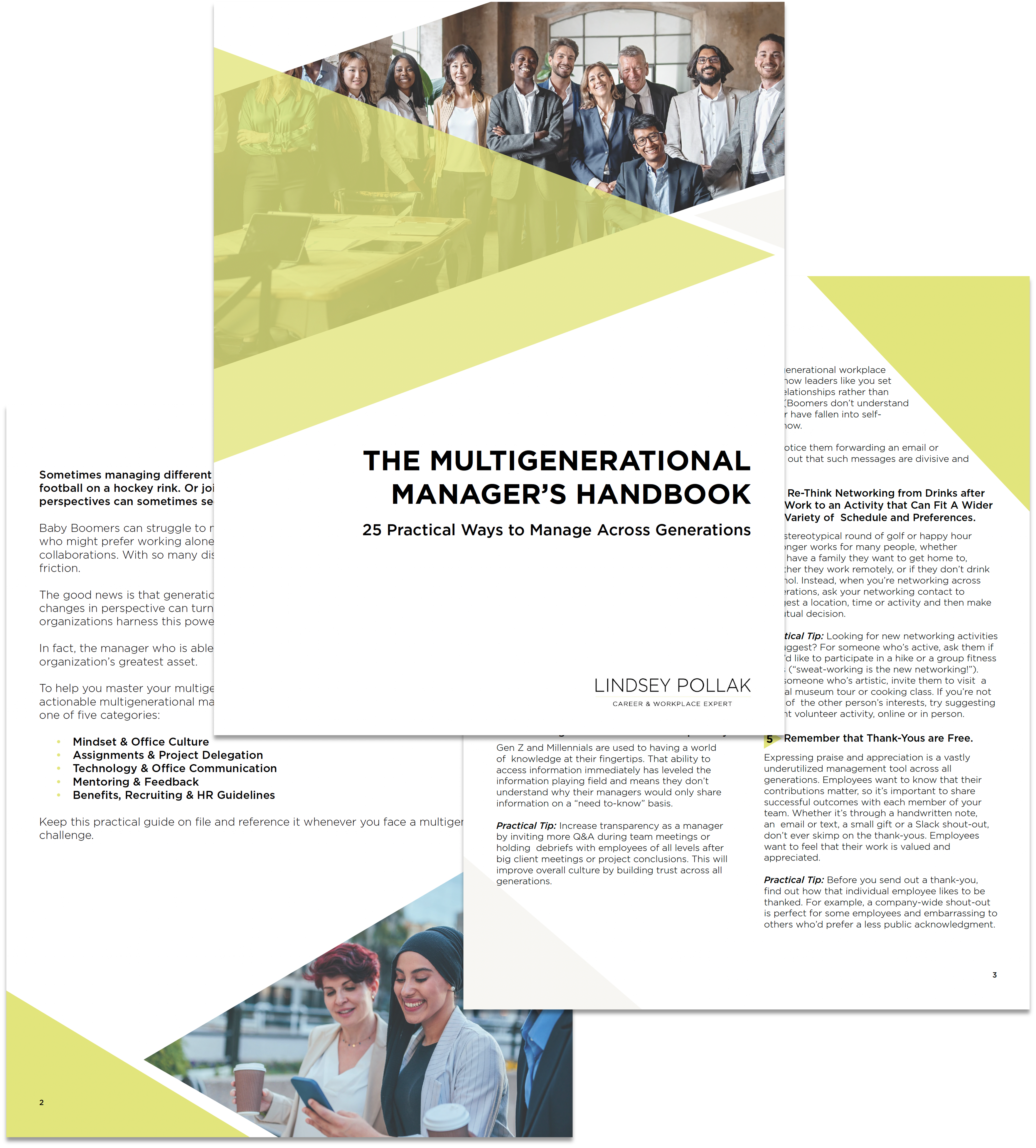As green careers continue to grow in popularity, I’m pleased to share an interview I conducted with Shari Aaron, co-author of Climb the Green Ladder: Make Your Company and Career More Sustainable.
Lindsey: For those who don’t know, what is social entrepreneurship and the “triple bottom line”?
Shari: Sustainability, corporate social responsibility, green, and triple bottom line are all terms that refer to doing business in a way that is more sustainable. These terms refer to taking into account the social, environmental and economic impacts of the way we do business — hence, not just a financial bottom line but a triple bottom line.
There has been a cultural shift in society’s expectations that businesses should work to protect the environment and its people. In fact, 95 percent of CEOs report that businesses must address the social and environmental pressures of society (McKinsey & Co., July 2007) and mounting evidence shows that employees will drive companies’ efforts to address sustainability (MIT Sloan Management Review, Sept 2009).
Social entrepreneurs work both inside of companies and in their own firms to help advance a triple bottom line approach to business and society. If you utilize entrepreneurial talents inside of a company, you can be referred to as a social intrapreneur. The success of social intrapreneurs lies not only in their passion for sustainability, but also in their ability to translate that passion into a great pitch, a solid business plan, and positive, measurable results.
Lindsey: Can you share some examples of sustainable businesses?
Shari: Companies like Timberland, Green Mountain Coffee, Seventh Generation, and Interface are often referred to as more sustainable businesses as they incorporate positive social and environmental practices into core business operations. This includes reducing toxic materials, water, and waste while increasing use of renewable energy sources and recycling more materials. Many large corporations, academic institutions, and government offices are working to increase their commitments to sustainable practices — these include such household names as Johnson & Johnson, HP, and Walmart. Even the United States Postal Service uses soy inks in their stamps and has made commitments to reducing greenhouse gas emissions.
Lindsey: What does it mean to “climb the green ladder”? What can each of us do as individuals to be more sustainable in our careers?”
Shari: There has been a circular argument about sustainability — many say corporations should green up their acts, others say governments should legislate more on these issues, and still others say that consumers should be demanding products that are more sustainable. Individuals make up all these organizations and each individual has the power and ability to make a difference, to influence his or her workplace. In fact, that is what has been happening as more and more employees –from all levels and from all industries — are influencing their workplaces.
“Climb The Green Ladder” refers to a new corporate ladder — one where employees bring their values to work and help their workplaces become more sustainable and profitable. It also refers to a progression and six key principles that are behind all effective sustainability strategies. These six key principles are outlined in Climb The Green Ladder and have come from extensive research with more than 500 employees and sustainability experts.
Lindsey: What advice do you have for students and young professionals interested in launching or working for a sustainable company?
Shari: I would encourage them to consider joining organizations like New York Women Social Entrepreneurs (NYWSE) that provide a community of support, mentoring, and resources. I also would encourage them to “get the mindset” around sustainability and to understand the issues that face society as well as to learn as much as they can about how forward-thinking companies and individuals are addressing climate change and limited resources, poverty, toxic waste, etc. I would encourage them to read Climb The Green Ladder, in which they will learn important principles and case studies to help inspire and motivate them to action.
In addition, be sure to read a company’s and competitors’ sustainability reports and ask relevant questions on job interviews. Seek out greener, more progressive companies and help them to grow. Work with your colleagues and peers to bring attention to your current workplace. Never give up — it’s too important.
Lindsey: Tell us about your new program to help female professionals near New York City get ahead in their careers.
Shari: In order to provide women with the platform to become business leaders at their workplaces, New York Women Social Entrepreneurs (NYWSE) is launching its Emerging Sustainability Leaders (ESL) program.
As a longtime corporate sustainability professional and author of Climb the Green Ladder: Make Your Company and Career More Sustainable (Wiley), I founded the ESL program to work with women professionals in developing a business case for implementing sustainable initiatives at their workplaces. The training program will address best practices and lessons learned as well as provide an opportunity for each participant to present her business case before a panel of experts. The [triple-]bottom line: A group of well-prepared, innovative women ready to take the lead and change the way their companies do business, improving financial, social, and environmental results.
The program, which is designed for female professionals, will begin in January 2010 and take place in New York City. For more information on the NYWSE ESL program, please see: www.bit.ly/nywse-esl

